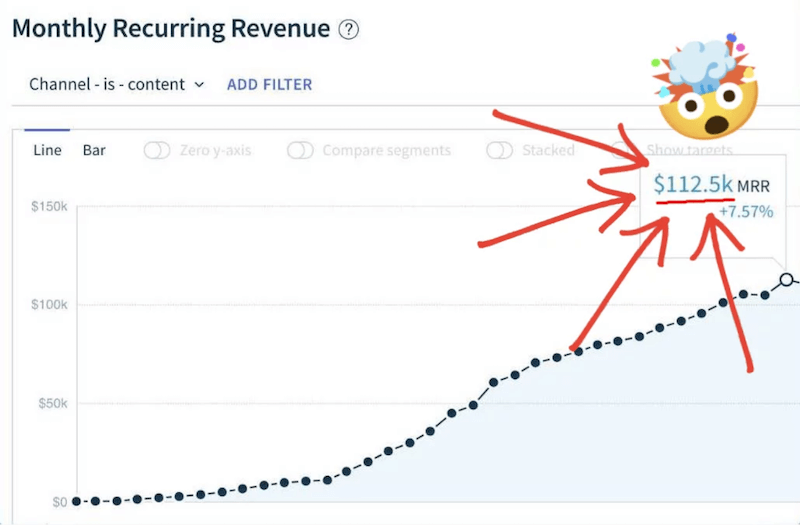What is inpainting?
Ever played with an etch-a-sketch, only to find a part of your masterpiece missing or messed up? Inpainting is like the magical fairy that swoops in and fills those gaps with what it thinks should be there. It's a technique used in image processing where artificial intelligence steps in as the ultimate guessing-master, predicting and filling any missing or damaged parts of an image. So next time you have a photo with unwanted elements or holes to fill, you’ll need some inpainting.
Inpainting fast facts
Inpainting restores missing or damaged parts of images, blending traditional art and digital techniques.
There are different inpainting techniques, with diffusion-based methods like PatchMatch and Total Variation offering the smoothest reconstructions.
Deep learning-driven inpainting, like Generative Adversarial Networks (GANs), elevates inpainting by considering both texture and image meaning.
Semantic inpainting dives deeper, focusing on an image's overall context to produce coherent reconstructions.
Outpainting extends an image's content beyond its original boundaries for applications like panoramas.
What is the meaning of inpainting?
Inpainting is a digital image restoration technique used to fill in missing or deteriorated parts of images, such as cracks, scratches, or even entire sections. This process helps bring the original content back to life by using information from surrounding areas and advanced algorithms. Inpainting has applications in various fields like art conservation, photo editing, and video processing.
The concept of inpainting dates back to traditional art methods where artists would carefully restore damaged physical paintings. However, with advancements in technology and the widespread use of digital photographs came the need for more efficient techniques. Enter modern-day inpainting methods that rely on deep learning models and iterative processes to achieve high-quality results while preserving the integrity of the original image.
One notable example is Adobe Photoshop's Content-Aware Fill tool which uses an algorithmic approach for filling gaps seamlessly within images based on their surroundings. Another recent development includes Stable Diffusion Inpainting — a method that combines diffusion models with additional conditioning inputs resulting in smoother transitions between regions during reconstruction efforts.

A before and after of digital inpainting, where an artist's brush reveals the transformation from an incomplete figure to a fully rendered suit. Photograph: DALL-E.
What is the process of inpainting?
The process of inpainting kicks off with identifying the damaged or missing parts within an image. This is usually done by creating a mask that highlights these areas, which can be manually drawn using tools like Adobe Photoshop's paintbrush or automatically generated through algorithms. Once the target regions are defined, it's time to move on to the actual restoration.
Inpainting techniques vary depending on their approach and complexity. Some methods involve sampling nearby source regions in the image and copying pixel values over to fill gaps, while others use more advanced strategies such as diffusion models that iteratively blend information from surrounding pixels for smoother results. In recent years, deep learning-based approaches have gained popularity due to their ability to produce high-quality reconstructions even when dealing with large-scale damage.
As technology advances and our reliance on digital images grows stronger, we'll likely see continued improvements in inpainting processes aimed at providing seamless repairs without compromising authenticity. From preserving cherished family photos marred by age-related wear-and-tear to fixing corrupted video frames during live streaming events, there's no denying that inpainting plays a crucial role in maintaining visual integrity across various industries worldwide.
What is the purpose of image inpainting?
The primary purpose of image inpainting is to restore and repair damaged or missing parts of an image, ultimately enhancing its visual quality. This technique has a wide range of applications across various industries, including art conservation where it's used to revive aged or physically damaged artworks while maintaining their original essence. In photography, inpainting helps breathe new life into old photos by removing scratches, tears, and other imperfections that may have developed over time.
Another key application lies in the field of video processing and streaming services. Image inpainting techniques can be employed to fix corrupted frames or remove unwanted elements like logos from videos without disrupting the overall viewing experience for users. As more people consume digital content on a daily basis (with the volume of data created worldwide hitting 120 as of 2023), there's no denying that high-quality visuals are essential for capturing audience attention.
In summary, image inpainting serves as a valuable tool in preserving visual integrity across different media formats. With continued advancements in technology and algorithms driving better results than ever before, we can expect this technique's importance to only grow further as our reliance on digital imagery continues expanding throughout various aspects of modern life.
What is semantic image inpainting?
Semantic image inpainting is a more advanced form of digital image restoration that goes beyond merely filling in missing or damaged areas. It focuses on understanding the context and meaning behind the content within an image, allowing for more accurate and visually coherent reconstructions. This technique often leverages deep learning models to generate plausible structures and textures based on surrounding regions while taking into account semantic information.
One popular approach to semantic inpainting involves using generative adversarial networks (GANs), which consist of two neural networks — a generator and a discriminator — working together in competition. The generator creates new content, while the discriminator evaluates its authenticity compared to real images. Through this iterative process, GANs can produce impressive results even when dealing with large-scale damage or complex scenes.

A striking demonstration of digital inpainting: one side reveals a woman in full color, the other transformed into grayscale as if by an artist's brush, showcasing how technology can seamlessly alter images. Photograph: DALL-E.
What is inpainting in art restoration?
Inpainting in art restoration refers to the delicate process of repairing damaged or deteriorated areas within a painting, often with the goal of preserving its original appearance and historical value. This traditional technique has been practiced by skilled conservators for centuries, requiring an intricate understanding of artistic materials, styles, and techniques to seamlessly blend new elements into the existing artwork.
The modern era has seen digital inpainting methods emerge as valuable tools in art conservation efforts. These computer-based approaches use advanced algorithms that analyze surrounding regions within an image to generate plausible content for filling gaps or reconstructing lost details. Digital inpainting can provide more consistent results while minimizing human error — a significant advantage when dealing with priceless masterpieces.
As technology continues advancing and our appreciation for cultural heritage grows stronger (with global spending on arts expected to reach $2.6 trillion by 2024), it's clear that both traditional and digital inpainting will play crucial roles in preserving humanity's artistic legacy. From restoring age-old frescoes marred by time's wear-and-tear to digitally enhancing photographs documenting pivotal moments in history, these invaluable techniques ensure future generations can appreciate the beauty and significance of our shared past.
What is inpainting in deep learning?
Inpainting in the context of deep learning is all about leveraging sophisticated neural networks to tackle image restoration challenges. By using these advanced algorithms, we can effectively fill in missing or damaged portions of an image while maintaining its overall structure and meaning. Deep learning-driven inpainting has gained traction due to its capacity to deliver impressive results even when faced with complex scenes or extensive damage.
A notable example of this approach is employing generative adversarial networks (GANs) for semantic inpainting tasks. GANs consist of two dueling neural networks — a generator that crafts new content and a discriminator that assesses how well it matches real images. This back-and-forth process enables GANs to generate visually consistent reconstructions, taking into account both local textures and global semantics within an image.
As our world becomes increasingly digital across various sectors (think entertainment, advertising, security), deep learning-based inpainting will play a vital role in upholding visual quality online. These state-of-the-art algorithms are redefining what's possible when it comes to preserving and improving our visual experiences.
What are the techniques of image inpainting?
Image inpainting techniques can be broadly categorized into three main groups: traditional, diffusion-based, and deep learning-driven methods. Traditional approaches often involve sampling nearby source regions within an image and copying pixel values to fill gaps or reconstruct missing details. This method is relatively simple but may struggle with complex scenes or large-scale damage.
Diffusion-based techniques take a more advanced approach by iteratively blending information from surrounding pixels for smoother results. Examples include the PatchMatch algorithm used in Adobe Photoshop's Content-Aware Fill tool and Total Variation Inpainting which leverages mathematical models to minimize visual artifacts for image reconstruction. These methods offer improved performance compared to traditional techniques but still have limitations when dealing with complex scenarios.
Deep learning-driven inpainting has emerged as a powerful alternative capable of handling complex situations effectively. Techniques like Generative Adversarial Networks (GANs) use neural networks that generate new content while considering both local textures and global semantics within an image, resulting in visually coherent reconstructions even when faced with extensive damage or elaborate scenes.
What is stable inpainting?
Stable Diffusion Inpainting is an advanced image restoration technique that aims to fill in missing or damaged areas within an image while maintaining visual coherence and stability. This method leverages diffusion models, which iteratively blend information from surrounding pixels for smoother results compared to traditional inpainting techniques.
The primary advantage of Stable Diffusion Inpainting lies in its ability to produce high-quality reconstructions with minimal artifacts and inconsistencies. By focusing on the stable transmission of pixel values across boundaries between image regions, this approach guarantees seamless blending during the restoration process. It's particularly useful when dealing with complex scenes or large-scale damage where other methods might struggle.

A portrait split in two halves showcases the magic of inpainting: one side is a sketch, and the other a complete photo using inpainting technology. Photograph: DALL-E.
What are the disadvantages of image inpainting?
One disadvantage of image inpainting is the potential for inconsistent results, especially when using traditional or diffusion-based techniques. These methods may struggle to reconstruct complex scenes or large-scale damage accurately, leading to visible artifacts and discrepancies within the restored image. This limitation can be particularly problematic in applications like art conservation where preserving authenticity is crucial.
Another drawback lies in the possibility of overwriting original content during the inpainting process. If not handled carefully, some restoration techniques might inadvertently alter genuine details within an image while attempting to fill gaps or repair damaged areas. This risk highlights the importance of conservators and digital artists possessing a deep understanding of both artistic materials and inpainting algorithms when working on important pieces.
Lastly, despite recent advancements in deep learning-driven inpainting methods such as GANs, these approaches are still computationally intensive and require significant processing power — potentially limiting their widespread adoption across various industries (with global AI hardware market projected to reach $248 billion by 2030).
What is outpainting vs inpainting?
Inpainting and outpainting are two distinct image processing techniques that serve different purposes. Inpainting focuses on restoring damaged or missing parts of an image by filling in gaps with plausible content based on surrounding areas. This technique is widely used for various applications, such as art conservation, photo editing, and video processing.
On the other hand, outpainting (also known as image extrapolation) aims to extend the existing content of an image beyond its original boundaries while maintaining visual coherence. The goal is to generate new regions that seamlessly blend with the original scene's structure and style. Outpainting has numerous applications like creating panoramic images from single photos or expanding background elements in digital media production.
Both inpainting and outpainting can leverage advanced algorithms — including deep learning models — to achieve high-quality results. While inpainting deals primarily with repairing imperfections within an existing frame, outpainting ventures into generating entirely new content outside the given boundaries.

